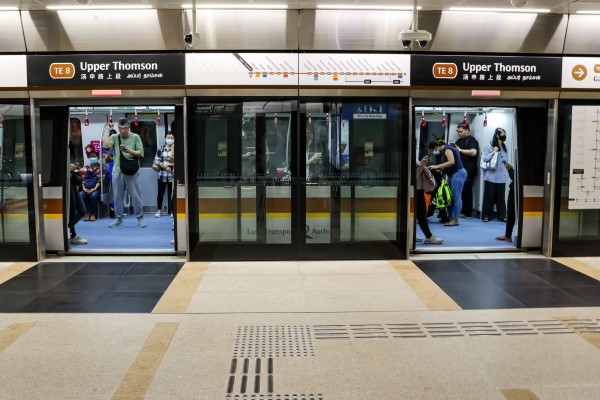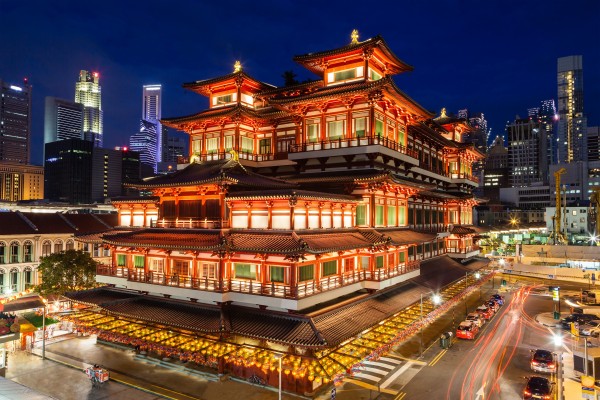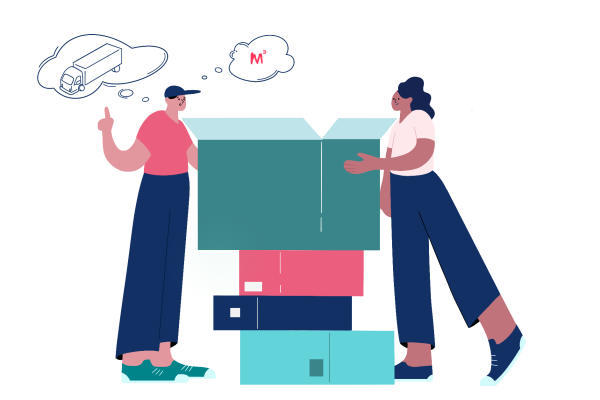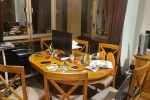
Introduction to Singapore
Did you know Singapore is voted the cleanest and greenest city in the world according to a 2021 Time Out Index survey ? And for good reason too. Despite being the smallest country in Asia measuring 710 square kilometres, Singapore has a strong reputation for its impeccable cleanliness and low crime rate due to its successful inaugural national campaign “Keep Singapore Clean” which launched in October 1968.
The campaign addressed the problem of inconsiderate littering and rallied citizens to take responsibility for improving their environmental conditions to enhance their overall quality of life. In addition, new initiatives such as the relocation and licensing of itinerant hawkers into markets and hawker centres were introduced by the government in 1970 to safeguard public cleanliness.
What Are Hawker Centres in Singapore?
History of Hawker Centres
In the past, street hawkers used to peddle food in mobile pushcarts by the roadside. However, due to the unhygienic conditions and congestion caused by these stalls, the government started to resettle these hawkers into permanent food stall venues with proper amenities, otherwise known as hawker centres. The purpose was to create safe and hygienic working conditions for street hawkers to provide affordable meals to the public, thereby reducing food contamination, disease outbreaks and traffic obstructions.
Modern Day Hawker Food Centres in Singapore
Today, hawker centres have evolved into large open-air complexes that house a wide variety of cooked food stalls in Singapore, offering an extensive range of affordable and delicious local dishes from different ethnic groups. They are a unique aspect of Singapore’s heritage and one of Singapore’s most beloved culinary attractions that attracts tourists and celebrity chefs from all over the world.
Our iconic food centres serve as popular communal dining spaces for families and friends to indulge in a diverse array of cuisines in a casual relaxed setting. From the popular Hainanese chicken rice and char kway teow to mouthwatering satay and roti prata, this famous hawker food in Singapore is a reflection of our country’s melting pot of cultures and traditions.
Hawker centres in Singapore are often conveniently located in residential areas, near shopping malls or at transport hubs. You can find some of the top hawker centres in Singapore within walking distance of public housing estates! It is worth noting that hawker centres can be busy and crowded during peak hours and meal times, hence it is best to visit during less crowded periods to ensure a comfortable dining experience.
Singapore’s Hawker Culture Fame
On 16 December 2020, hawker culture in Singapore was inscribed as Singapore’s first element on the UNESCO Representative List of the Intangible Cultural Heritage of Humanity. This recognition celebrates the hard work and dedication of all hawkers past and present, and cements Singapore’s Hawker Culture as an expression of cultural diversity through the shared love for food.
In September 2022, the very first Singapore-style hawker centre, Urban Hawker opened in New York featuring famous hawker food from 17 food vendors such as chilli crab, oyster omelettes, nasi lemak, wonton noodle soup, murtabak, curry rice with scissor-cut fried chicken, char kway teow and Hainanese chicken rice. It was celebrity chef, Anthony Bourdain’s vision to open a bustling Singapore food hall in New York.
To date, this hawker centre concept has been well-received by New Yorkers.
Wet Markets in Singapore
Most hawker centres are built with adjoining wet markets to serve each neighbourhood in the heartlands. Wet markets are traditional marketplaces with a vibrant atmosphere where vendors sell a wide variety of fresh produce and dried ingredients such as aromatic spices and condiments at bargain prices. Visitors get to immerse in the unique sensory experience of handpicking fresh ingredients for home cooking while receiving friendly and personalised experiences from stallholders they patronise regularly.
NEA Market Cleaning
The National Environment Agency (NEA) manages all 118 markets and hawker centres in Singapore, regulates tenancies and reviews the public health aspects of each venue to ensure cleanliness, hygiene and a pleasant environment for stall vendors and visitors.
Why Does NEA Clean Food Markets?
NEA has established daily cleaning routines and protocols for hawker centres. These include regular cleaning schedules for various areas within the hawker centres, such as dining areas, food stalls, tables, floors, and restrooms.
The cleaning process typically involves sweeping, mopping, and washing the common areas. Waste bins are strategically placed throughout the hawker centres to encourage patrons to dispose of their trash properly. NEA also collaborates with hawker centre management and cleaning contractors to ensure that the cleaning standards are met.
Daily Cleaning of Wet Markets
Similarly, NEA oversees the cleaning of wet markets to maintain cleanliness and hygiene. The cleaning activities in wet markets involve a thorough cleaning of stalls, walkways, drains, and communal areas. These areas are regularly washed, disinfected, and kept free from debris or spillage daily. Similar to hawker centres, NEA works closely with market management and cleaning contractors to ensure proper cleaning practices are followed.
NEA Market Cleaning Schedule 2023
Hawker centres and markets in Singapore undergo periodic closures for a few days every year to facilitate deep cleaning and maintenance activities. Although these temporary closures may inconvenience some people, they are necessary to ensure long-term cleanliness, proper maintenance and functional upkeep of these public spaces. Here are four reasons why hawker centres and markets are required to close down temporarily:
- Deep Cleaning: Regular cleaning routines may not be sufficient to address deep-seated dirt, grime, or accumulated waste in hard-to-reach areas. By closing down, NEA can conduct extensive cleaning processes that include scrubbing, disinfecting, and thorough sanitization of the premises. This deep cleaning helps maintain high hygiene standards and creates a clean environment for vendors and visitors.
- Repairs and Maintenance: During the temporary closure period, hawker centres and markets undergo necessary repairs, maintenance, and renovation work. This may include fixing plumbing issues, repairing infrastructure, repainting, or upgrading facilities. By temporarily shutting down the premises, NEA can carry out these essential maintenance tasks without causing inconvenience or safety hazards to the public.
- Pest Control: Hawker centres and markets are susceptible to pest infestations due to the presence of food and organic waste. Temporary closures allow NEA to conduct pest control measures effectively. It helps eliminate pests, prevent the spread of diseases, and maintain a clean and healthy environment for both vendors and customers.
- Compliance with Regulations: NEA mandates that hawker centres and markets undergo periodic thorough cleaning to ensure compliance with cleanliness standards and maintain the overall hygiene of these public spaces.
Alternative Arrangements For Hawkers And Stall Owners
During this closure period, temporary relocation may be required for hawkers and stall owners to continue their business operations without interruptions. They may also need to make arrangements for temporary storage to keep their equipment and supplies secured. This is where Wise Move comes in to support stall owners.
Wise Move is a platform that is able to match stall owners with affordable movers and packers to safely transport their equipment and supplies to an alternative location. With the option to schedule overnight transportation, it allows them to swiftly set up their temporary stalls without unnecessary disruption to their business.
FAQ
Which Hawker Centre is Closed For Renovations and Cleaning in 2023?
For the most accurate and up-to-date information regarding NEA market and hawker centre cleaning schedules, please refer to this official list
Is The Geylang Market Closed in 2023?
Block 69 Geylang Bahru Market and Food Centre will be closed on the following dates:
-
- 12 - 13 June 2023
- 18 - 19 September 2023
- 18 - 20 December 2023
Geylang Serai Market will be closed on the following dates:
-
- 12 - 14 June 2023
- 4 - 7 September 2023
- 11 - 13 December 2023
How Many Hawker Stalls Are There in Singapore?
As of 2021, there are over 13,570 licensed hawker stalls in Singapore.
Are All Wet Markets Closed On Monday?
While it used to be a common practice for wet markets to close on Mondays in the past, these days the opening and closing days vary among individual stall owners as well as the market management committee.
Are Hawker Centres Cash Only?
While the majority of stalls accept cashless payment such as mobile payment apps, NETS, mobile wallets and contactless payment, there are still a handful of stalls that only accept cash. It is advisable to bring some cash during your visit to a hawker centre.
What do our customers say?






What’s happening?
Please notify us of any violations. This information will be kept confidential and shared only with Wise Move.
- It’s inaccurate or incorrect
- If you find it offensive
- It’s something else





















